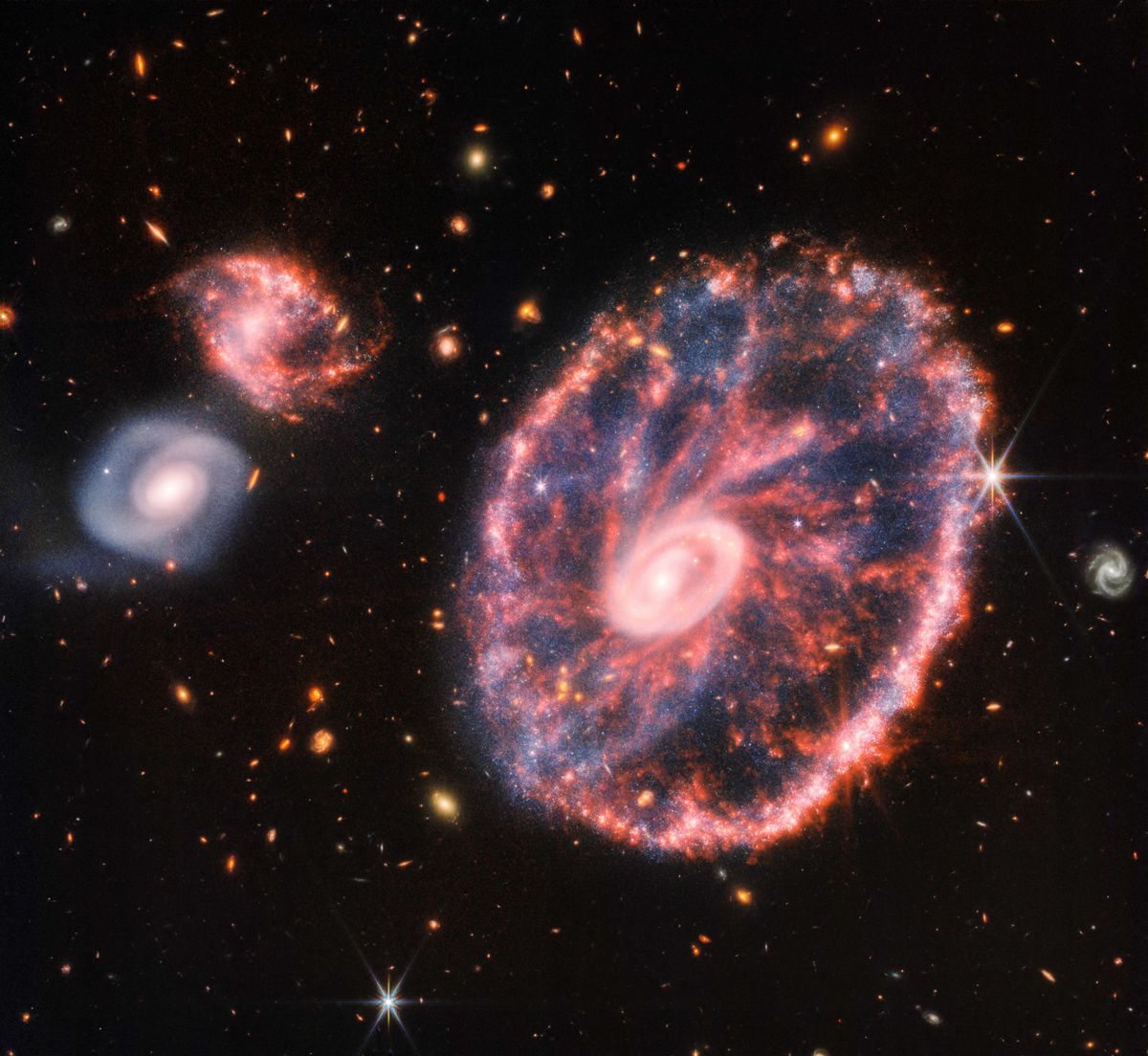While the new scientific results derived from its observations begin to cook up, the
James Webb
Super Telescope
continues to show its potential with detailed and spectacular observations of old acquaintances, such as the one just published of the Cartwheel galaxy.
Thanks to the newly launched telescope's high-precision instruments, individual stars and star-forming regions within this galaxy can now be observed with great resolution.
It has also revealed the behavior of the black hole that acts as the axis of the Cartwheel, a formation that is located about 500 million light years away, in the Sculptor constellation.
More information
All about the James Webb Telescope
A rare lenticular galaxy once shrouded in dust and mystery,
Webb
scientists explain , it formed as a result of a collision between a large spiral galaxy and a smaller galaxy, causing massive changes. throughout its structure.
The collision caused the resulting galaxy to sport two rings: a bright inner one and a colorful surrounding one.
“These two rings expand outward from the center of the collision, like ripples in a pond after a stone is thrown.
Due to these distinctive features, astronomers call it a 'ring galaxy', a less common structure than spiral galaxies like our Milky Way”, explains the European Space Agency (ESA) in a note.
The James Webb
Telescope
is a very expensive and sophisticated scientific infrastructure that was launched into space on December 25 and managed to place itself in its orbit, 1.5 million kilometers from our planet, a few weeks later.
Its first images, presented by the president of the United States, Joe Biden, show the potential of this observatory developed in collaboration with Europe and Canada: to see further into the universe than any other telescope, until it captures the light of the first stars born after of the Big Bang, 13.7 billion years ago.
You can follow
MATERIA
on
,
and
, or sign up here to receive
our weekly newsletter
.

